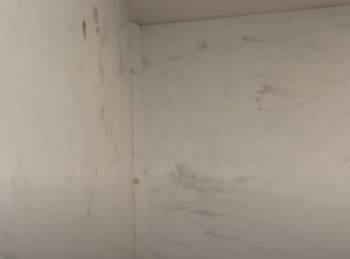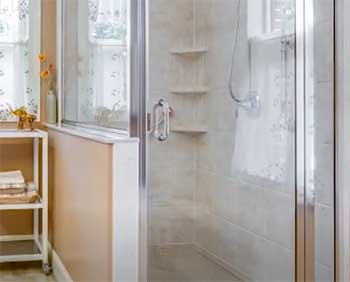If you’ve ever stood in your bathroom, staring at the shower walls, and thought, “These could really use an upgrade,” then you’re not alone. I’ve been there, and after considering countless options, I landed on Transolid shower walls.
I will share my firsthand experience, providing you with an honest review, weighing the pros and cons, and offering maintenance tips. By the end, you’ll have a solid understanding of whether Transolid shower walls are the right fit for your bathroom.
So, let’s get started on this journey together!
Why Transolid?
First off, why did I choose Transolid? Like many of you, I wanted something durable, aesthetically pleasing, and easy to maintain. Transolid promises a range of benefits, from durability to style, and claims to offer a great balance between cost and quality.
But does it live up to the hype?
Let’s find out.
Pros of Transolid Shower Walls
- Durability

One of the standout features of Transolid shower walls is their durability.
Made from a combination of natural stone and polymer, these walls are designed to last.
Unlike traditional tiles, which can crack or chip over time, Transolid walls are much more resistant to such damage.
I found this particularly appealing, as I wanted a long-term solution without the need for frequent repairs.
- Aesthetic Appeal
Another major pro is the aesthetic appeal. Transolid offers a wide range of colors and patterns, mimicking the look of real stone without the hefty price tag.
Whether you’re into the classic look of marble or the modern feel of concrete, there’s likely a design that suits your taste. In my case, I chose a sleek, modern design that instantly elevated the look of my bathroom.
- Easy Installation
Installation is another area where Transolid shines. The panels are designed for easy installation, which can save you time and money if you’re doing a DIY project.
Even if you hire a professional, the straightforward installation process means less labor cost. I opted for professional installation, and it was completed in just a few hours.
- Low Maintenance
One of the biggest selling points for me was the low maintenance. Unlike tile grout, which can get grimy and moldy, Transolid walls are non-porous, making them easy to clean.
A simple wipe down with a mild cleaner is usually all it takes to keep them looking pristine. This has saved me a lot of time and effort in my cleaning routine.
- Cost-Effective
While Transolid is not the cheapest option on the market, it offers good value for money. The combination of durability, aesthetic appeal, and low maintenance makes it a cost-effective choice in the long run.
I found that while I paid a bit more upfront, the savings on maintenance and potential repairs made it worthwhile.
Cons of Transolid Shower Walls
- Initial Cost
As I mentioned earlier, Transolid isn’t the cheapest option available. The initial cost can be a bit steep, especially if you’re working with a tight budget. However, considering the long-term benefits, it can be a worthwhile investment.
- Limited Customization

While Transolid offers a variety of designs, the options for customization are somewhat limited compared to traditional tile.
If you have a very specific design in mind, you might find the selection a bit restrictive.
In my case, I found something that worked well, but I can see how it might be a drawback for others.
- Professional Installation Recommended
Despite the ease of installation, I’d still recommend professional installation to ensure a perfect fit and finish. This adds to the overall cost. If you’re a seasoned DIYer, you might manage it yourself, but for most people, hiring a professional is the safer bet.
- Potential for Scratches
While Transolid is generally durable, it’s not entirely scratch-proof. Sharp objects or abrasive cleaners can cause scratches. I’ve had to be a bit more mindful of this and switched to using only non-abrasive cleaning tools and products.
Maintenance Tips For Transolid Shower Walls
- Regular Cleaning

Regular cleaning is essential to keep your Transolid shower walls looking their best.
Use a mild, non-abrasive cleaner and a soft cloth or sponge.
Avoid harsh chemicals or abrasive scrubbers, as these can damage the surface.
- Addressing Scratches
If you do get a scratch, it’s usually not the end of the world. Minor scratches can often be buffed out with a fine abrasive pad or a gentle polish. For deeper scratches, you might need to call in a professional.
- Preventing Stains
Although Transolid is resistant to stains, it’s still a good idea to wipe down the walls after each use. This prevents soap scum and hard water deposits from building up, keeping the walls looking clean and new.
- Sealing
Unlike natural stone, Transolid shower walls don’t need to be sealed. This is a significant advantage, as it reduces the long-term maintenance burden. However, if you notice any signs of wear or damage, it’s worth consulting with the manufacturer or a professional to see if any preventive measures are recommended.
Comparison With Other Brands
- Transolid Vs. Tile
When comparing Transolid to traditional tile, several differences stand out. Tiles offer endless customization options and a classic look.
However, they require more maintenance due to grout lines, which can become a breeding ground for mold and mildew. Transolid, being non-porous and grout-free, is much easier to clean and maintain.
- Transolid Vs. Acrylic

Acrylic shower walls are another popular choice.
They’re typically less expensive than Transolid and are also easy to install.
However, they’re not as durable and can yellow over time.
Acrylic is also more prone to scratching compared to Transolid.
In my experience, Transolid provides a better long-term solution despite the higher initial cost.
- Transolid Vs. Fiberglass
Fiberglass shower walls are lightweight and affordable, but they don’t offer the same level of durability or aesthetic appeal as Transolid. Fiberglass can also be more challenging to repair if it gets damaged.
While fiberglass might be a good option for budget-conscious renovations, I found Transolid to be a more robust and visually appealing choice.
- Transolid Vs. Solid Surface
Solid surface shower walls, like those from brands such as Corian, are very similar to Transolid in terms of durability and maintenance. Both options offer a seamless look and are easy to clean.
The main difference often comes down to design options and personal preference. I chose Transolid for its specific design offerings, but both materials are excellent choices for a high-quality shower upgrade.
Frequently Asked Questions (FAQ)
Absolutely! Based on my experience, Transolid offers a great balance of durability, aesthetic appeal, and ease of maintenance. While it may have a higher upfront cost, the long-term benefits make it a worthwhile investment.
Transolid shower walls are made from a blend of natural stone and polymer. This combination provides a durable, non-porous surface that is resistant to stains, scratches, and moisture.
The best shower wall panels depend on your specific needs and preferences. Transolid is an excellent choice for those looking for durability, easy maintenance, and a range of design options. However, if you’re on a tighter budget, acrylic or fiberglass panels might be more suitable.
Acrylic shower walls, while affordable and easy to install, have several disadvantages. They can yellow over time, are more prone to scratching, and may not offer the same level of durability as other materials like Transolid.
Wrapping Up
Choosing the right shower walls for your bathroom is a significant decision, and I hope my experience with Transolid shower walls has provided you with valuable insights. While there are some cons, the pros, in my opinion, outweigh them significantly.
The durability, aesthetic appeal, and low maintenance make Transolid a solid choice for anyone looking to upgrade their shower space. Remember, it’s all about finding what works best for you and your home.
Whether you go with Transolid or another option, make sure it fits your needs and lifestyle.
Happy renovating!
